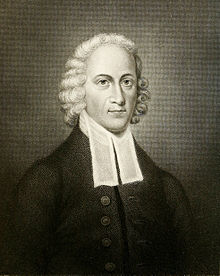Andrew P.C.
Puritan Board Junior
First to you scenario: Three things I can think of would be 1) if you have seen an eastern orthodox vestment or roman catholic vestment, the reformed gown is significantly different, and you'd be able to tell 2) wearing a gown visibly separates you from the rest of the church, being a visible reminder that your calling is unique and should be held in honor, knowing that you are speaking the words of God 3) even if you wore an authoritative "suit", it would still be common and not unique. Even though the minister is part of the church, he is still set apart from the rest of the members because of his calling to shepherd the flock. You could wear a suit, but so can everyone else in the congregation. Think about it this way too: the sacraments are visible signs to remind us. We are weak and as weak humans, we need visible signs to remind us of things. This is what the gown does. It reminds us that when the minister is going through the liturgy, and in the dialogue, he speaks as God speaks. We must remember that there is a time and place when we can be casual with our minister, but when he is up there, that is not the time. Hope this helps.









